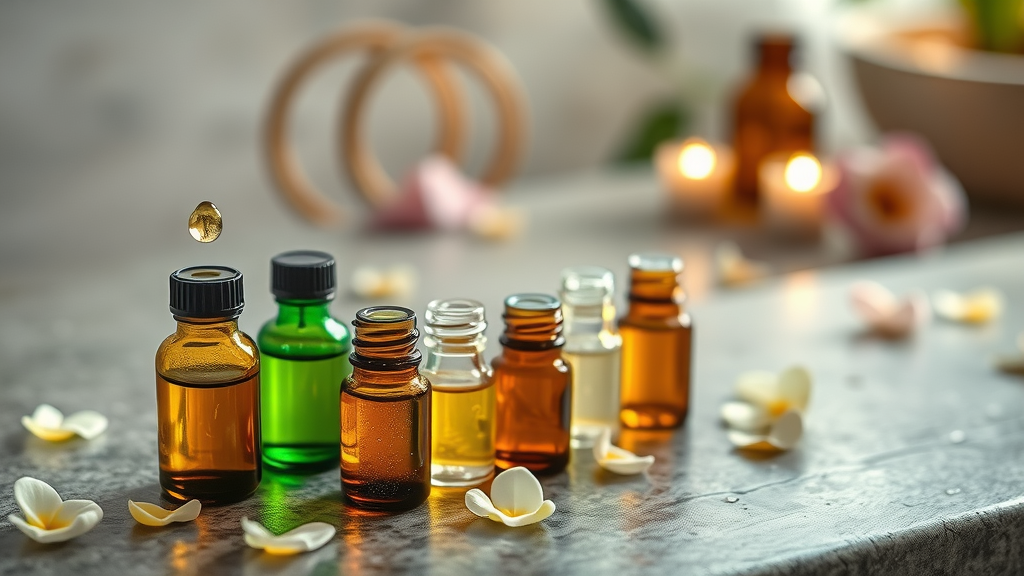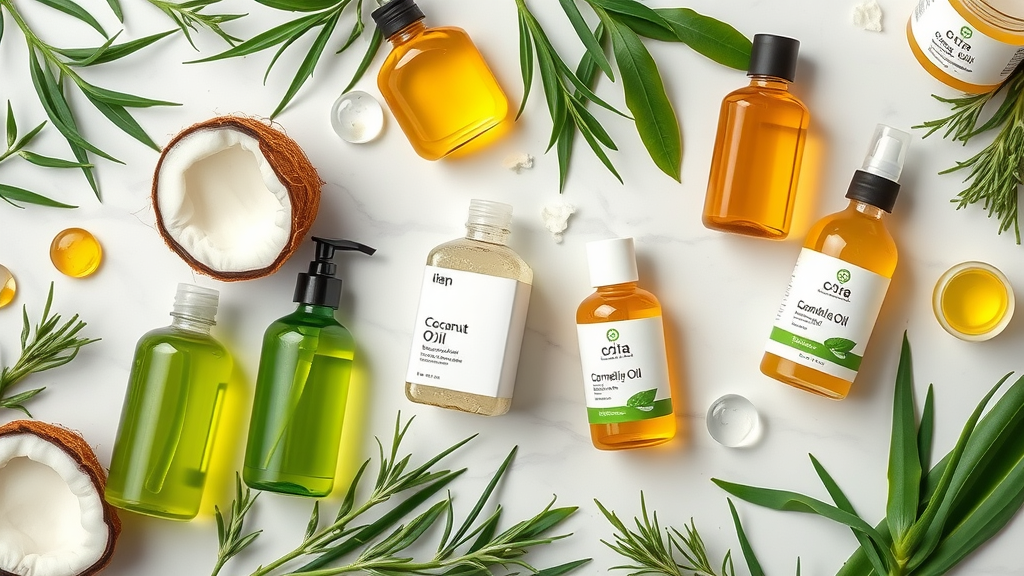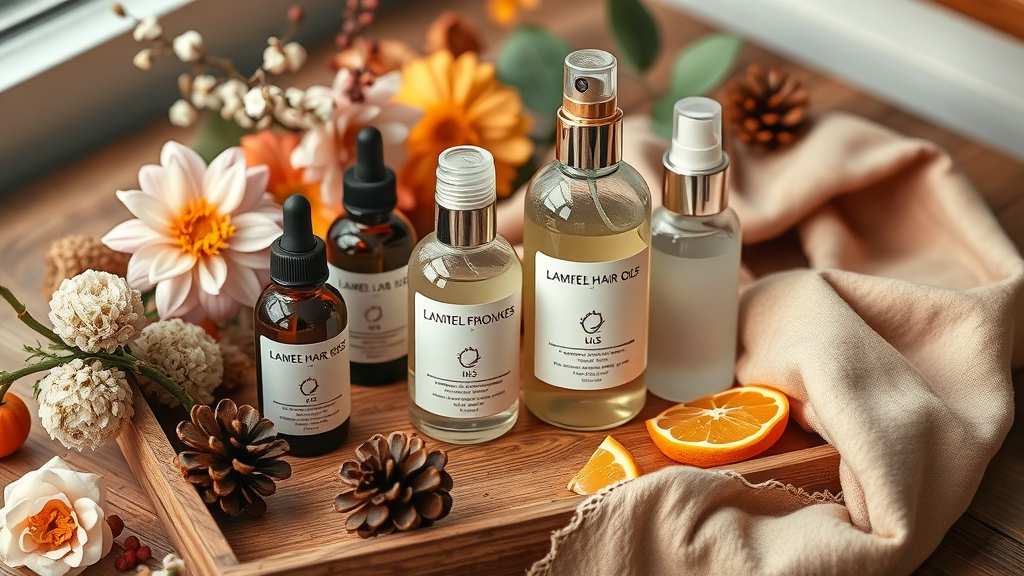Are you missing out on the natural secrets to truly radiant hair? If you’ve ever wondered why your hair struggles to shine or feels dry and damaged despite a full shelf of products, it’s time to rethink your approach! This comprehensive guide will show you the natural hair treatments that beauty experts, celebrities, and world cultures trust for health, vitality, and unstoppable shine. Stop believing the myth that only high-priced salon treatments can revive your hair—you’ll soon see, with the right natural care, your best hair days are just ahead.
Unlock Your Hair’s Radiance: Are You Overlooking These Natural Hair Treatments for Healthier, Shinier Strands?
Natural hair treatments have surged in popularity as more people realize the power of botanicals and oils for nourishing and revitalizing their locks. Unlike commercial products laden with artificial chemicals, these solutions harness ingredients like coconut oil , olive oil , and rosemary oil to deeply condition, repair damaged hair, and restore shine. Whether you are dealing with dry hair , hair loss , split ends, or simply want to boost your hair’s luster, natural hair treatments offer customizable and affordable options suitable for every hair type.
Imagine skipping expensive salon visits while enjoying softer, shinier, and stronger hair—all from ingredients found in your own kitchen. By incorporating natural treatments regularly, you’ll tackle stubborn issues like brittle ends, slow hair growth, and dullness. In the following sections, you’ll discover proven routines, DIY mask recipes, and ancient approaches (like Japanese hair care traditions) that promote lasting hair health and vibrancy.

- Discover the science and benefits behind natural hair treatments
- Learn how natural hair masks, essential oils, and scalp massages can fight damaged hair and hair loss
- Find step-by-step guides to incorporating coconut oil, olive oil, and rosemary oil into your hair care routine
- Understand Japanese hair care techniques and their impact on hair growth and health
- Get actionable tips for treating split ends, dry hair, and boosting hair shine using home remedies
Understanding Natural Hair Treatments: Foundations of Shine, Strength, and Vitality
What Are Natural Hair Treatments? How Do They Compare to Conventional Hair Treatment Options?
Natural hair treatments focus on using ingredients derived from plants, oils, and minerals to condition, repair, and enhance hair health . In contrast, many conventional hair treatment options rely on synthetic chemicals that can strip hair of its natural oils and lead to long-term hair damage or dry hair .
Common natural remedies—like coconut oil hair masks and olive oil treatments—provide gentler alternatives that respect your scalp and hair shaft. These methods often boost moisture, reduce frizz, and address issues like split ends without the risk of unwanted reactions. In comparison, some commercial hair treatments contain sulfates, parabens, or silicones, which may offer quick fixes but can compromise hair health over time.
By choosing natural hair treatments , you also gain versatility. You can mix and match remedies to suit your hair’s changing needs—whether that’s a nourishing mask for damaged hair , an essential oil blend to boost hair growth , or a daily moisturizing ritual for all-day shine.
The Science of Hair Growth: Why You Should Choose Natural Hair Treatments for Hair Growth and Repair
The foundation of a healthy scalp and robust hair growth lies in consistent care with ingredients that mimic the body’s own nutrients. For instance, fatty acids in coconut and olive oil help repair the hair shaft , while vitamins E and antioxidants from natural botanicals shield the hair follicles from oxidative stress.
Scientific studies confirm that regular use of natural hair treatments can boost blood flow to the scalp, nourishing hair follicles and making them less prone to hair loss . Unlike harsh treatments, these methods gently promote growth, support the healing of damaged strands, and prevent future breakage—all essentials for those seeking thicker, healthier hair.
When compared with traditional chemical-based solutions—which may address symptoms but often exacerbate underlying fragility—natural care stands out for its cumulative, long-term benefits. It’s about treating both the scalp and strands holistically, leading to lasting improvements in texture, shine, and strength.
“Nature provides some of the most powerful remedies for damaged hair, without the artificial chemicals that can do more harm than good.”
Essential Ingredients in Effective Natural Hair Treatments

Unlocking the Power of Coconut Oil and Olive Oil in Hair Mask Recipes
Two of the most celebrated ingredients in natural hair treatments are coconut oil and olive oil . These oils penetrate deeply into the hair shaft—thanks to their rich content of fatty acids —restoring moisture, elasticity, and strength. Coconut oil is particularly renowned for its ability to reduce protein loss in both undamaged and damaged hair, protecting each strand from the inside out.
Olive oil, on the other hand, boasts high levels of vitamin E and antioxidants, providing robust conditioning power for those struggling with dry hair or recurring split ends . When used as hair masks, these oils help repair hair damage , increase resilience against breakage, and even out frizz and roughness for glossier, softer locks.
The best part? These natural hair masks are easy to prepare at home with simple, wholesome ingredients. By regularly giving your hair these intensive treatments, you’ll see visible improvements in texture, shine, and overall manageability.
Benefits of Using Rosemary Oil and Other Essential Oils for Hair Health
Rosemary oil is a staple in many natural hair growth remedies, celebrated for its ability to stimulate blood flow and encourage new hair follicle activity. Clinical studies suggest that rosemary oil is as effective as medical treatments in reducing hair loss —minus the chemicals. When massaged into the scalp, it can help fight dandruff, improve overall hair health , and boost shine.
Other essential oils , like peppermint, tea tree, and lavender, offer additional antimicrobial and anti-inflammatory benefits, making them helpful for scalp health and defending against environmental stressors that can damage hair. Blending these oils together in carrier oils creates personalized treatments to address issues such as dry hair , scalp irritation, or sluggish hair growth .
Incorporating essential oils into your hair care routine is simple—just add a few drops to your favorite carrier oil and apply with a gentle scalp massage for a spa-worthy experience at home.
Why Scalp Massage is Key in Natural Hair Treatment Routines
A scalp massage isn’t just a luxurious treat—it’s a cornerstone of effective natural hair treatments. By improving blood flow to the scalp, massages encourage delivery of oxygen and nutrients to the hair follicles , resulting in accelerated hair growth and greater strength.
Regular scalp massages help reduce tension, break up product buildup, and support healthier hair from the source. Whether you use your fingertips or a specialized tool, combining the massage with essential oils enhances the delivery of beneficial nutrients. This simple addition to your routine can make a dramatic difference in shine, resilience, and the pace of new growth.
Start with three minutes a few times a week, gently rubbing in circles under gentle pressure. Over time, you’ll notice fuller, softer, and more vibrant hair, especially when paired with nourishing treatments.
Hair Mask Solutions: Elevate Your Hair Care with DIY Natural Hair Masks
How to Make a Nourishing Coconut Oil Hair Mask for Damaged Hair
Creating a coconut oil hair mask is an easy, cost-effective way to transform damaged hair from brittle and lifeless to soft and strong. Begin by melting a few tablespoons of pure coconut oil, then cool slightly. Apply the oil evenly from roots to tips, concentrating on areas with the most damage or dryness.
Cover your hair with a shower cap and leave the mask on for at least 30 minutes (or overnight for a deep condition). The oil’s fatty acids work to repair the hair shaft , promote elasticity, and strengthen against future breakage. After rinsing with a gentle shampoo, your hair will feel noticeably smoother and shinier.
Repeat this hair treatment once or twice a week for best results, especially if your hair is prone to split ends or dry hair . Over time, the cumulative benefits of coconut oil will help restore natural luster and vitality.

Olive Oil Hair Mask: Rescue and Repair for Split Ends and Dry Hair
Olive oil hair masks are particularly effective at targeting split ends and dry hair . To make a simple mask, combine two tablespoons of high-quality olive oil with one egg yolk and a spoonful of natural honey. Egg yolk supplies amino acids and proteins that reinforce the hair strands, while honey attracts moisture and gives hair a silky texture.
Apply the mixture to clean, damp hair, focusing on the ends. Wrap your hair with a towel or shower cap and let the mask soak in for 20–30 minutes. Upon rinsing, you’ll see immediate results—your hair feel will be softer, your shine enhanced, and your split ends less noticeable.
Use this hair treatment weekly to minimize ongoing damage and give your hair a rich shot of hydration.
The Science Behind Hair Masks: Protecting Natural Hair from Hair Damage
Effective DIY hair mask recipes owe their success to science. Ingredients like coconut oil and olive oil contain medium-chain triglycerides and antioxidants that penetrate the hair shaft , fortifying it with nourishing compounds. When applied as a mask, these molecules fill in microscopic cracks caused by styling stress and chemicals, reducing the risk of future hair damage .
Regular use of masks also seals the cuticle, which keeps moisture locked into the hair, increases shine, and improves manageability. This deep conditioning effect is especially beneficial for those with natural hair textures prone to dryness or coarseness.
Not only do masks protect against external aggressors, but they also restore balance to your scalp—supporting ongoing hair growth and leaving every strand looking its healthiest.
| Mask Recipe | Key Ingredients | Target Benefit | Application Time |
|---|---|---|---|
| Coconut Oil Mask | Coconut oil (2–3 tbsp), warm | Deep moisture, repair for damaged hair | 30–60 minutes |
| Olive Oil & Egg Mask | Olive oil, egg yolk, honey | Split end rescue, shine | 20–30 minutes |
| Rosemary Oil Treatment | Rosemary oil, carrier oil | Stimulates hair growth, boosts scalp health | 15–20 minutes |
| Avocado & Yogurt Mask | Avocado, Greek yogurt, olive oil | Protein boost, softens dry hair | 20–30 minutes |
| Banana & Honey Mask | Banana, honey, coconut oil | Smooths frizz, hydrates natural hair | 25–30 minutes |
Natural Hair Treatments for Hair Loss, Hair Growth, and Stronger Strands
Best Essential Oil Blends for Combatting Hair Loss and Promoting Hair Grow
Blending essential oils creates tailored treatments for concerns like hair loss and sluggish hair growth . For example, combining rosemary oil with peppermint and lavender boosts circulation, calms inflammation, and supports healthy follicles. Tea tree oil adds antimicrobial protection, keeping the scalp flake-free and helping follicles thrive.
To create an effective blend, mix three drops each of rosemary oil , peppermint oil, and lavender oil in two tablespoons of a carrier oil such as jojoba or coconut. Apply the blend directly to your scalp and massage gently, using circular motions. Leave on for 20 minutes before washing out.
Incorporating essential oil blends into your weekly hair care plan helps nourish roots, reduces excessive shedding, and supports new hair to grow in thicker and stronger.

Scalp Massage Techniques to Support Hair Growth and Prevent Hair Damage
Proper scalp massage techniques make a difference. Use your fingertips (not nails) and work in small circles all over your scalp, starting at the hairline and moving toward the crown. The pressure should be firm but gentle, just enough to encourage circulation without discomfort.
For added benefit, apply a blend of essential oils or nourishing base oils before massaging. Repeat this ritual for at least three to five minutes, two to three times per week. Over time, not only will you notice improved hair growth and texture, but your scalp health will dramatically improve, supporting the overall resilience of your hair.
Scalp massage also helps break down blockages like residue and dead skin, keeping the follicles clear for new strand formation and minimizing potential for hair damage .
How to Treat Split Ends and Strengthen Natural Hair Using Natural Oils
Split ends can stunt progress toward longer, healthier hair, but consistent treatments with coconut oil , olive oil , and essential oil infusions can offer repair and protection. When applied to the tips of your hair, these oils seal the cuticle and smooth rough edges, making splits much less noticeable while preventing further splitting up the hair shaft.
For best results, warm the oil to room temperature and apply generously to ends after towel-drying your hair. Leave the oil in as a leave-in treatment overnight, or rinse after 30 minutes for lighter conditioning. Citrus essential oils can also boost shine, making your hair feel lighter and more vibrant.
Combine these approaches with regularly scheduled trims—this will allow your growing hair to retain strength, develop shine, and resist everyday stress.
- Coconut oil: deep nourishment and split end repair
- Rosemary oil: stimulates growth, improves scalp health
- Olive oil: restores luster and prevents breakage
- Essential oil blends: targeted support for hair loss
Japanese Hair Care Insights: Ancient Traditions Meet Modern Hair Treatment
Why Japanese Hair Care Stands Out in Natural Hair Treatment Approaches
Japanese hair care rituals are renowned for their balance of tradition, science, and nature. Unlike Western routines, which often rely on a multitude of products and complex steps, Japanese practices use minimal, high-quality botanical ingredients—delivering strength and shine through simplicity.
This approach values prevention as much as repair. By incorporating oils like camellia and rice bran, Japanese routines protect hair against environmental stress while nourishing the scalp for robust hair growth . The focus on natural oils , gentle shampooing, and daily scalp care leads to consistently healthy hair regardless of hair type.
For those exploring natural hair treatments , integrating Japanese-inspired routines can lead to truly transformative results in texture, shine, and resilience.

Key Ingredients like Camellia Oil and Their Benefits for Hair Health and Shine
Camellia oil is a hero ingredient in Japanese hair care, cherished for its light texture and abundance of fatty acids , vitamin E, and antioxidants. This oil penetrates quickly without weighing hair down, making it ideal for everyday use on even the finest strands.
Applied to damp or dry hair, camellia oil smooths frizz, seals split ends, and provides a high-gloss finish. Regular use creates a protective barrier against pollution and heat, helping hair look and feel shiny, strong, and youthful.
Other traditional Japanese botanicals—such as rice water and yuzu extract—bring additional benefits with their unique vitamin and amino acid profiles, further supporting ongoing shine and hair health.
“Japanese beauty rituals favor simplicity, purity, and natural botanicals for truly lustrous hair.”
Daily Natural Hair Care Routines: From Dry Hair Rescue to All-Day Shine
Establishing an Effective Home Hair Care Routine for Natural Hair
The foundation of every natural hair journey is a consistent, simple home care routine. Begin each week with a scalp massage using your preferred essential oil blend to stimulate follicles and nurture the scalp. Twice a week, treat your hair with a deep-conditioning mask using coconut oil or olive oil . This routine delivers the moisture necessary for softness and resilience.
To maintain shine and protect against day-to-day stress, apply a lightweight natural oil as a daily leave-in, focusing on the ends. Avoid harsh shampoos and opt for gentle, sulfate-free formulas to retain natural moisture. With regular trimming and protection from excessive heat styling, these small habits make a big difference in how your hair looks and feels.
Consistency is key. Over time, your natural hair care routine will help reduce split ends, tame frizz, and encourage steady hair growth .
- Pre-wash scalp massage with essential oils
- Hair mask treatment twice weekly
- Daily protection with leave-in natural oils
Quick Remedies for Damaged Hair and Split Ends
When time is tight, natural hair treatments provide fast fixes for split ends and damaged hair . Smooth a dab of warmed coconut oil or olive oil over your ends and let it sit for 5–10 minutes before rinsing. This instant boost hydrates, softens rough edges, and delivers visible shine.
Try a honey-and-yogurt mask to quickly revive brittle or fried hair—apply for 10 minutes, rinse, and style as usual. Simple home recipes can work wonders when you need healthy hair in a hurry.
Don’t forget, regular maintenance is crucial! Keep up with your oil treatments and masks for ongoing strength and shine.

Using Hair Natural Products for Optimal Hair Growth and Shine
Modern natural hair care products blend time-tested ingredients like coconut oil , essential oils , and botanical extracts for maximum results. Look for formulas free from sulfates, parabens, and silicones, as these can contribute to dryness and slow hair growth .
Use lightweight, non-greasy oils post-wash or before styling to add long-lasting shine without weighing hair down. For added benefits, choose serums and mists enriched with vitamins, amino acids, or antioxidants—these compounds support scalp health and reinforce each hair strand.
Paired with a regular masking and scalp massage routine, quality natural products form the backbone of optimal hair health .
People Also Ask: What is the Best Natural Hair Treatment?
Overview of Top-Rated Natural Hair Treatments Backed by Science and Tradition
The best natural hair treatment depends on your specific hair needs. For deep nourishment and split end repair, coconut oil and olive oil are hard to beat. To stimulate hair growth and address hair loss , rosemary oil and essential oil blends deliver noticeable improvements. Japanese botanicals like camellia oil offer lightweight shine and brilliant conditioning for daily use.
Traditions from around the world—and scientific research—agree: using unrefined, pure ingredients in your hair care practice yields healthy, resilient hair. Mix and match these time-honored treatments to meet your unique goals and hair type.
For best results, combine these natural ingredients with regular scalp massages, gentle cleansing, and diligent protection from heat and pollutants.

People Also Ask: How to Treat Your Hair at Home Naturally?
Simple At-Home Steps for a Hair Treatment Routine Using Natural Ingredients
Treating your hair at home with natural hair treatments is as simple as stocking up on a few essentials—and sticking to a routine. Start with a weekly coconut oil mask to lock in moisture, followed by a scalp massage with essential oil blends to encourage blood flow and follicle activity.
Use honey, eggs, avocado, or yogurt as hair masks when you need rapid repair. Always rinse hair with cool water after treatments to seal the cuticle and maximize shine. And, integrate leave-in products like aloe vera gel or argan oil for daily hydration and protection.
Over time, these strategies build a foundation for shinier, healthier hair without the need for harsh products or salon visits.
People Also Ask: Why is Japanese Hair Care So Good?
Unique Philosophies, Natural Ingredients, and Their Lasting Impact on Natural Hair
Japanese hair care is considered a gold standard due to its emphasis on simplicity, natural ingredients , and preventive rituals. By prioritizing high-quality botanicals like camellia oil and rice water, the Japanese approach offers gentle nourishment without product overload.
Masks, gentle cleansing techniques, and regular scalp care minimize hair damage while enhancing shine and softness. Focused on both immediate beautification and future-proofing, this method keeps hair healthy and beautiful over a lifetime.
If you’re seeking long-term results and a more mindful way to care for your hair, integrating Japanese-inspired routines can make a substantial difference.
People Also Ask: What is the Healthiest Treatment for Hair?
Defining the Healthiest Natural Hair Treatments—Myths, Facts, and Expert Recommendations
The healthiest hair treatments are those that support both the scalp and strands without stripping or weighing down your hair. Myths often claim that every natural oil is good for everyone, but reality shows that coconut oil works better for thick, coarse hair, while lighter oils like camellia and argan are ideal for finer strands.
Experts universally recommend staying away from harsh sulfates and synthetic fragrances, focusing instead on whole, nutrient-rich ingredients. Weekly masks, regular scalp massage, and the use of antioxidant-rich botanicals stand out as top choices for ongoing hair health and shine.
At the heart of every regimen: consistency, gentle application, and ingredient quality. This trifecta ensures that your hair can thrive, regardless of type or texture.
| Treatment | Effectiveness | Best for Hair Type | Ease of Use |
|---|---|---|---|
| Coconut Oil Mask | ★★★★★ | Coarse, dry, natural hair | Easy |
| Olive Oil Mask | ★★★★ | Medium-thick, damaged hair | Easy |
| Rosemary Oil Blend | ★★★★ | All hair types, scalp care | Moderate |
| Camellia Oil Serum | ★★★★★ | Fine, fragile hair | Very Easy |
Preventing Hair Damage: Long-Term Benefits of a Natural Hair Treatment Regimen
Seasonal Adjustments: Adapting Natural Hair Treatments for Summer, Winter, and Beyond
As seasons change, so do your hair’s needs. In the summer, opt for lightweight oils and protective sprays to guard against sun exposure and humidity. During the winter, switch to heavier moisturizing masks (like coconut oil and olive oil ) and use silk scarves to lock in moisture and prevent breakage.
You can also adapt your routine with weekly deep conditioning, more frequent scalp massage , and regular use of hydrating leave-ins. Follow your hair’s cues—if it feels dry, add extra nourishment; if scalp irritation arises, focus on calming, antimicrobial oils.
Responsiveness is the secret to long-term health and consistent shine through every season.

How to Address Dry Hair, Split Ends, and Everyday Styling Stress
Daily styling and environmental exposure can take a toll—especially on dry hair and split ends . Protect your strands by wearing your hair in protective styles, minimizing use of heat tools, and switching to gentle, sulfate-free shampoos.
Weekly masks and oil treatments give your hair a defense against breakage, keeping it resilient despite styling demands. For ongoing health, set aside time to give your hair (and scalp) a little extra TLC with regular trimming, gentle detangling, and a focus on moisture.
Resilient, shiny hair isn’t about perfection—it’s about sustainable, mindful care practices that adapt to your needs over time.
- Wear protective styles when possible
- Minimize heat styling
- Use gentle, sulfate-free shampoos
- Apply weekly hair masks using olive oil or coconut oil
Expert Recommendations and Latest Trends in Natural Hair Treatments
Dermatologist-Approved Methods for Enhancing Natural Hair Growth
Dermatologists recommend consistent scalp care , mask treatments, and gentle washing to support healthy hair growth . Combining science-backed ingredients—such as rosemary oil and coconut oil —with scalp massage has been shown to produce fuller, thicker hair.
Experts also stress the importance of minimizing harsh chemical exposure, protecting strands from excessive heat, and supplementing your diet with nutrients that directly support hair strength—like biotin, vitamin D, and omega-3 fatty acids .
Armed with these dermatologist-approved strategies, your journey to strong, vibrant hair is evidence-based and achievable at home.
Emerging Trends: Ayurveda, Herbal Infusions, and Eco-Friendly Hair Care
The newest trends in natural hair treatments draw inspiration from global traditions. Ayurveda uses herbs like amla, brahmi, and neem to heal the scalp and boost shine. Herbal infusions (like rosemary, nettle, or hibiscus teas) are used as rinses to restore gloss and calm irritation.
Eco-conscious consumers are turning to zero-waste hair bars, plant-based serums, and refillable product lines. These options not only benefit your hair but also the planet—making natural care a holistic choice in every sense.
Try introducing a new technique or ingredient every few months to discover what works best for your hair and supports your values.
“Investing in a natural hair care routine now pays off in shine, strength, and resilience for life.”
Frequently Asked Questions: Everything You Need to Know About Natural Hair Treatments
How often should you do a natural hair treatment?
Most experts recommend doing a restorative hair mask once or twice a week, depending on your hair’s needs and condition. For scalp massages and essential oil applications, two to three times per week is effective for maintaining healthy hair growth and shine. Consistency is more important than frequency—find a schedule you can sustain for best results.
Can everyone use coconut oil hair masks?
While coconut oil hair masks are safe and beneficial for most hair types, those with very fine or oily hair may find them a bit heavy. If that’s the case, try lighter oils (like jojoba or camellia) or use coconut oil only on the ends. Always test a small patch first for any allergic reaction.
Are essential oils safe for sensitive scalps?
Essential oils can be potent and should always be diluted with a carrier oil before applying to the scalp. Those with sensitive skin should start with mild oils (like lavender) and conduct a patch test before regular use. Never apply undiluted essential oils directly to your scalp to avoid irritation.
What’s the difference between a hair mask and daily hair oiling?
Hair masks provide intensive, periodic conditioning treatments designed to repair, hydrate, or restore the hair. Daily oiling uses lighter amounts of oil to protect strands, tame frizz, and maintain shine. Masks act as deep treatments, while oiling offers ongoing protection and moisture.
Key Insights for Using Natural Hair Treatments to Transform Hair Shine
- Consistency and quality ingredients matter most
- Scalp massage boosts circulation and hair health
- Pair natural oils and masks for maximum results
Your Path to Shiny, Healthy Hair Starts with the Right Natural Hair Treatments
Ready to Transform Your Hair? Embrace the best in natural hair treatments to experience shine and vitality—your healthiest hair ever is just a step away!
Start today with a simple routine of masks, oils, and scalp massages—your hair will thank you with every strand.
To enhance your understanding of natural hair treatments, consider exploring the following resources:
-
“We Have the Glossiest Hair in NYC Thanks to These 9 Expert-Backed Hair Oils” : This article provides expert recommendations on the best hair oils for various hair types, emphasizing their roles in nourishing the scalp, locking in moisture, and protecting hair from breakage. ( whowhatwear.com )
-
“The 32 Best Protective Hairstyles for Natural Hair to Inspire Your Next Look” : This guide explores a variety of protective hairstyles that promote hair health by minimizing manipulation and shielding hair from environmental stressors. ( marieclaire.com )
If you’re serious about achieving healthier, shinier hair, these resources offer valuable insights and practical tips to incorporate into your hair care routine.
 Add Row
Add Row  Add
Add 




Write A Comment